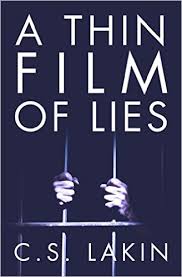Layering a Subplot into Your Novel
We’ve looked at plot twists these last couple of weeks because they are so useful to have in novels. Regardless of the genre you’re writing in, a great plot twist can strengthen your story and make it much more exciting than if you don’t have any.
Warning: this is a long, meaty post, but I’m going deep into one way you might layer your next ten scenes over your ten foundational scenes. You might want to settle in with a bowl of popcorn and a latte for this one.
Two of the ten foundational scenes in your novel should be some kind of twist. If you haven’t downloaded the chart showing the first ten scenes of my 10-20-30 scene builder method, get yours here. We’ve discussed those ten scene types—some in more depth than others—but I hope you now have a good feel for what they are and how and why they work in your story.
While you can build off those ten key scenes in a multitude of directions—and that’s what my next few Monday posts will be demonstrating—to ensure you have a strong foundation for your story, it’s best to work on those first ten.
Build Right the First Time
Really think them through and build them solidly. If you need help, stop and hire me. Don’t go any further constructing your novel if you’re unsure you have that foundation in place.
I speak truth when I say it is a whole lot harder to tear down a huge building and start from the ground up with new construction than to build right the first time. Why waste time?
Most of the novels I critique (of more than two hundred a year) are flawed. So flawed at this foundational stage that, honestly, they should be round-filed. I don’t mean to sound heartless, but it’s true. So many writers waste months and years of their lives building a story that doesn’t work foundationally.
And really, it’s not all that hard to build that foundation. You just need to start with the four corner pillars of novel construction, which I go deep into in The 12 Key Pillars of Novel Construction. I’m so passionate about helping you get this down that I created a free—yes, free!—online mini video course, to help you nail this.
Take my free course! It’s fun. I made cool slides and even have a couple of fun movie clips in it. All to help you get this. I really wish I didn’t have to critique so many novels that fail at the premise stage. Or that don’t have a protagonist going after a goal. I wish I didn’t have to tell so many aspiring novelists that their story doesn’t work. At all.
 So take an hour or two and go watch my five modules on the 4 Essential Pillars of Novel Structure. Enroll in my school (set up a user name and password—it takes all of a minute) and click on the free course.
So take an hour or two and go watch my five modules on the 4 Essential Pillars of Novel Structure. Enroll in my school (set up a user name and password—it takes all of a minute) and click on the free course.
If you’ve been struggling with your one-sentence concept, or if you can’t tell someone what your protagonist’s goal is or what the main theme of your novel is, you need this instruction. I’ve made it as easy, fun, and as painless as possible. So no excuses!
Okay, let’s get back on track. All this to say that once you’ve gotten those ten scenes figured out and you’ve written them down on your handy chart, you’re ready to come up with the next ten.
If you’re not sure your ten scenes are strong, send them to me, and I’ll go over them and discuss with you (at my hourly rate of pay).
One hour is about all it will require (unless you want to keep going and brainstorm more of your novel). But don’t move on to the next ten scenes until you have those first ten in place. Trust me.
The Next Ten Scenes
So, this is where it gets fun and crazy. Meaning, you have all kinds of options here when it comes to building and layering your scenes.
In thinking of various genres, I came up with all kinds of possibilities. So I’m going to throw a few at you and let you play with this.
I’ll show you an example of romance structure using this technique (since romance novels often have two different engines that drive the story), and I’ll explore suspense/thrillers and maybe fantasy. If there’s a genre you’d like me to provide an example for, let me know and maybe I’ll work something up.
Clearly, what you build on those initial ten scenes is going to vary with genre. Best way to get ideas on those full thirty key scenes is to study novels in your genre. I wish I got a dollar every time I’ve said that.
Do your homework.
You should be clear what genre you are writing in and what your readers’ expectations are. If you don’t understand this, you need to take my online Targeting Genre for Big Sales course. If you’re already enrolled in my school, you’ll see it there on the dashboard. You need to target genre, or there’s little hope you’ll sell books. Just sayin’ . . .
Layer In a Subplot
Genre withstanding, one way you can proceed with the next ten scenes is to do a subplot layer.
I love this method, and it’s a whole lot of fun. Let me say this: few novelists really know how to write great subplots. Subplots take a good novel and make it great. Novelists rarely think about adding in subplots! It’s pathetic, I’m sorry to say.
I probably will write an entire craft book on subplots. Next project . . .
But for now, know that it’s tremendously important you spend time learning about subplots—what they are, how they work, how to weave them into a novel, etc.
If you use this method I’m about to share, you might discover a whole new, fun world of plotting.
Before we get into this “20” in my 10-20-30 scene builder concept as it pertains to subplots, please take the time to read some of my posts (or writing craft book chapters) on subplots. Here are some key posts:
Layers and Layers of Plots, Oh My!
How to Add Meaningful Subplots to Your Novel
Plots and Subplots in a Series of Scenes
I’m going to use my novel A Thin Film of Lies as the example for this method. Here’s one cool thing about subplots—and I wonder if any writing instructor has ever taught this (or thought of doing it this way): you can create a fully developed subplot outside your novel and then bring it in.
What I mean is, you can write all your scenes pertaining to your subplot in a separate document, and it can be easiest and most effective to do so after you’ve written your entire first draft.
See if you can wrap your head around this concept (that gives me a strange image, for sure). You’ve written your first draft. Your story is tight. You know your themes. You have your Plot A all done and working great. If you don’t understand what Plots A, B, and C are, read those posts listed above.
But now you want to add in that Plot B to enrich your story, give greater depth to your protagonist, bring out your theme(s) in a powerful way, and add richness to one or more secondary characters.
Subplots Are Great for Bringing Out Your Themes
You see, when you work in a strong subplot, it accomplishes so much for your story. That’s why I am such a huge proponent of subplots. Not only do they help show the wide scope of life, with its big and small issues and problems, they provide a way to bring theme to the forefront via conflict and tension. And that, my friends, is what great storytelling requires!
 So here’s what I did with Thin Film. My themes were very apparent (as they always are to me with my novels, since I usually start with theme and work from there), and so to enforce, highlight, and drive home my themes, I worked up a subplot.
So here’s what I did with Thin Film. My themes were very apparent (as they always are to me with my novels, since I usually start with theme and work from there), and so to enforce, highlight, and drive home my themes, I worked up a subplot.
To quickly set up the story: Fran Anders is a homicide detective. She gets put on a hit-and-run case that points to Mike Jepson, businessman, as guilty. Evidence mounts to indicate that Jepson ran down Libby with his car, and Mike ends up arrested and in jail, despite his protests that he’s innocent (Plot A).
This genre is clear. It’s a detective story. So the plot plays out with the development of the investigation of the apparent crime, building to the big climax and twists that reveal “whodunit” and what happens next (big surprise twist at the end).
So my challenge was in coming up with a subplot that was just right for my novel. Since my main theme centered on the protestation of innocence and Fran’s challenge in believing in Jepson’s innocence despite the “proof,” I decided I would run a parallel subplot with that theme.
I set up that Fran’s husband left her, without a warning, ten years earlier, and now her two kids are teens. Trevor is seventeen and struggling emotionally. He is at odds with Mom. But it’s more than typical teen angst. That ten-year anniversary of hubby’s abandonment is fast approaching, and Fran has never really talked to Trevor about his pain (or hers). Clearly he’s having abandonment issues.
This all ties into the rich character arc and spiritual/emotional MDQ I want answered in the novel. Meaning, Fran has not faced her own pain and hurt—not fully—regarding her husband’s flight. I decided to use the subplot as a means to set her on this journey so that by the climax, she has to face all the ugliness—her pain and feelings of failure as a parent—through the conflict with Trevor.
So what I did, after the novel was completed (and I did this because I took Fran from being a minor character and made her my protagonist, so the initial draft of the novel didn’t include any of this) was make a list of six key scenes—full scenes—in which to develop the subplot. (The novel also went from a meager 70,000 words t about 110,000 words, which is a length I prefer.)
Note that the situation regarding the subplot is mentioned and thought about in many other scenes as Fran mulls her problems over in her mind or discusses with coworkers or friends. But the actual full scenes in which the subplot plays out comprises six big scenes.
I wrote all these scenes in a separate document and later inserted them in the key places in the story.
Think about trying this. First make a brief outline for the key developments of the subplot, then write the scenes.
I came up with a subplot that involves Trevor being accused of hacking into the school’s computer and changing some grades of some of the students. Trevor claims he’s innocent, but evidence strongly proves he’s guilty. A parallel theme that meshes beautifully with Plot A.
Next week, I’ll lay out these scenes for you and show you where they fit into the 10-20-30 scene builder structure. This way you can see how you might do something similar. You may already have a rough draft done. This doesn’t mean you have to take out some scenes to make room for the new ones. These are going to slip in at key places.
Your subplot(s) needs to build similarly to how your main plot builds. There is the setup, then come complications, setbacks and twists, then the big confrontation or conflict right before the wonderful resolution.
I hope this idea gets you excited and thinking about subplots!
Thoughts on all this? Share in the comments.












I’ve always used subplots, usually based on other characters with similar or contrasting obstacles as my protagonist. My biggest problem is twofold: getting all the subplots resolved at the same time as my main character’s climactic sequence, and most importantly making those side struggles feed into and work toward the resolution of the main character’s quest. Getting what seem like parallel strands of story to come together to tie an intricate and strong bow at the end of the story is quite a challenge. I really only understood that by working through the end of my first novel with Susanne. I’m on the third now, and while I know what to do, I still struggle to find just the right way to tie things together. But that’s part of the fun of writing. These posts are giving me new ways to approach the problem.
Thanks, Sara! Subplots are challenging and fun. And using your outlines makes it easier to ensure all those plot lines resolve satisfyingly by the end. Often the key subplot gets resolved after the main plot climax. Just as the reader thinks the story is resolved, those last issues are dealt with and tied up.
Thanks, Sara! Subplots are challenging and fun. And using your outlines makes it easier to ensure all those plot lines resolve satisfyingly by the end. Often the key subplot gets resolved after the main plot climax. Just as the reader thinks the story is resolved, those last issues are dealt with and tied up.
This is brilliant. I had never thought about essentially writing a separate short story for my sub-plot and then layering it in. That makes so much sense and seems so easy. Right now I am editing my first draft of a book and am thinking about taking all the sub-plot scenes and copying them into a separate document and seeing how cohesive a story they make. That will help me see what I need to add or subtract from the original manuscript. I can see doing the sub-plot(s) as separate stories from now on. Thank you for another useful and informative writing tip. I am going to share this with all the writers I know.
I think taking out all your existing subplot sections is the wise course. Then when you have all your scenes rewritten or newly written and in order, you can determine the right places to insert them. Keep in mind: you don’t have to wait until you’ve written a full draft before writing the subplot scenes. Often it will work better to write them in a companion document while writing the primary scenes of the novel.